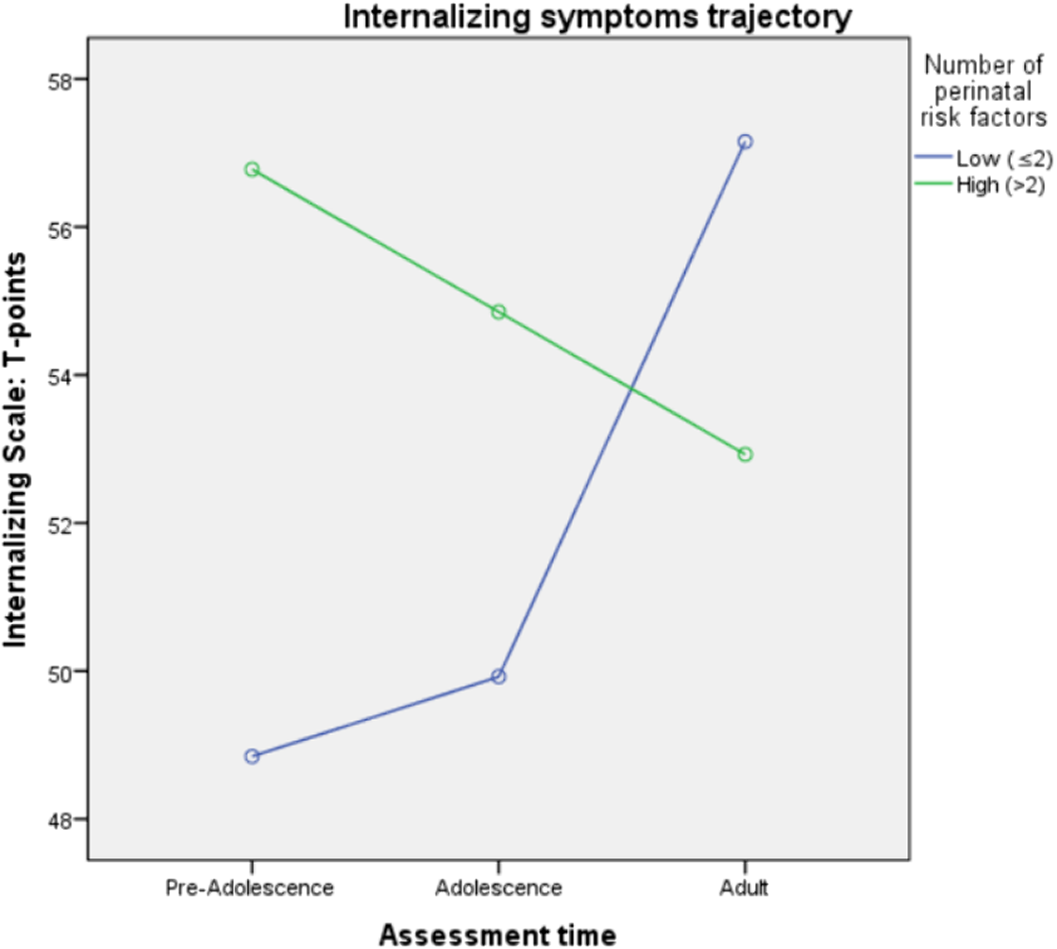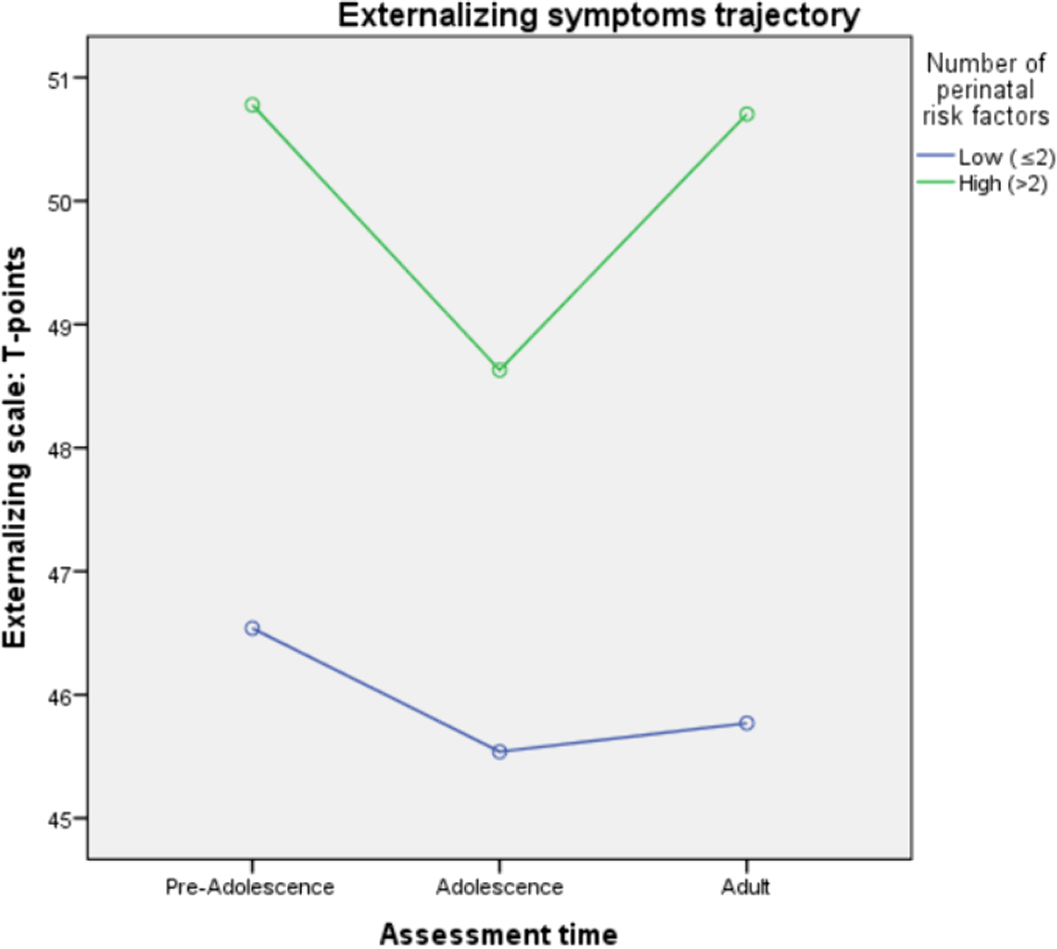No CrossRef data available.
Article contents
Relationship between internalizing and externalizing symptoms trajectories and perinatal risk factors in an epidemiological sample: Preliminary results from the remind project
Published online by Cambridge University Press: 13 August 2021
Abstract
Our 15-years follow-up ReMIND project aims to re-assess an epidemiological and a clinical sample of adults (Wave 3), who were assessed in preadolescence (Wave 1) and adolescence (Wave 2), to evaluate symptoms trajectories and their relationship with genetic/epigenetic data, environmental risk factors and neuroimaging measures.
Here, we depict preliminary results regarding the epidemiological sample.
We assessed internalizing and externalizing symptoms in 40 italian subjects (25 F) from general population at three waves (W1 mean age: 12±0,82; W2 mean age: 17±0,88, W3 mean age: 28±1), through the Child Behavior Checklist (W1 and W2) or the Adult Self Report (W3), and perinatal risk factors through a socio-anamnestic questionnaire, by a new online platform (MedicalBit). We analyzed symptoms trajectories and their relation with perinatal risk factors through a repeated measures multivariate analysis of variance (rm-MANOVA).
rm-MANOVA results show that high number of perinatal risks was significantly associated with higher internalizing symptomatology in preadolescence but not in adolescence and adult life. The mean difference was 8 T-points. The same trend is evident in adolescence but not in adult age (Graph 1). Perinatal risk factors did not have a significant effect on externalizing symptoms at any time point, despite a non-significant trend is evident (Graph 2).

Our preliminary results suggest a trend of increased internalizing symptoms from childhood to adulthood and a significant role of perinatal risk factors in pre-adolescence. Further investigations are necessary to better understand symptoms trajectories and the role of biological and environmental factors.
No significant relationships.
Keywords
- Type
- Abstract
- Information
- European Psychiatry , Volume 64 , Special Issue S1: Abstracts of the 29th European Congress of Psychiatry , April 2021 , pp. S148 - S149
- Creative Commons
- This is an Open Access article, distributed under the terms of the Creative Commons Attribution licence (http://creativecommons.org/licenses/by/4.0/), which permits unrestricted re-use, distribution, and reproduction in any medium, provided the original work is properly cited.
- Copyright
- © The Author(s), 2021. Published by Cambridge University Press on behalf of the European Psychiatric Association





Comments
No Comments have been published for this article.